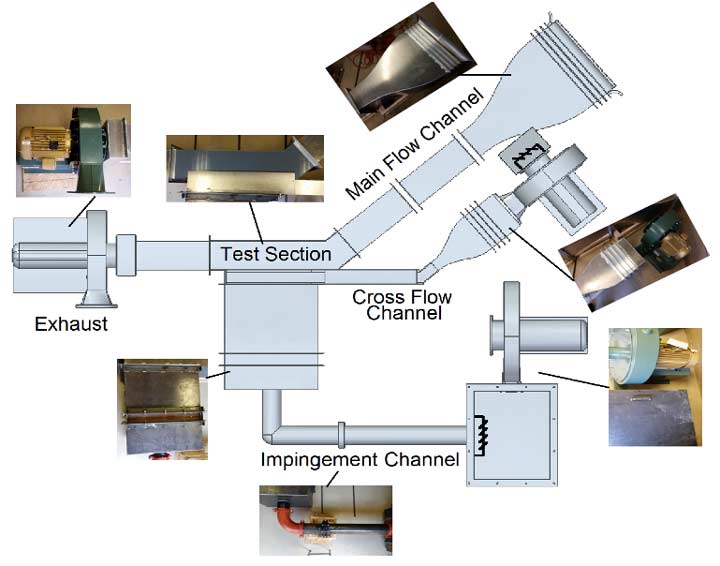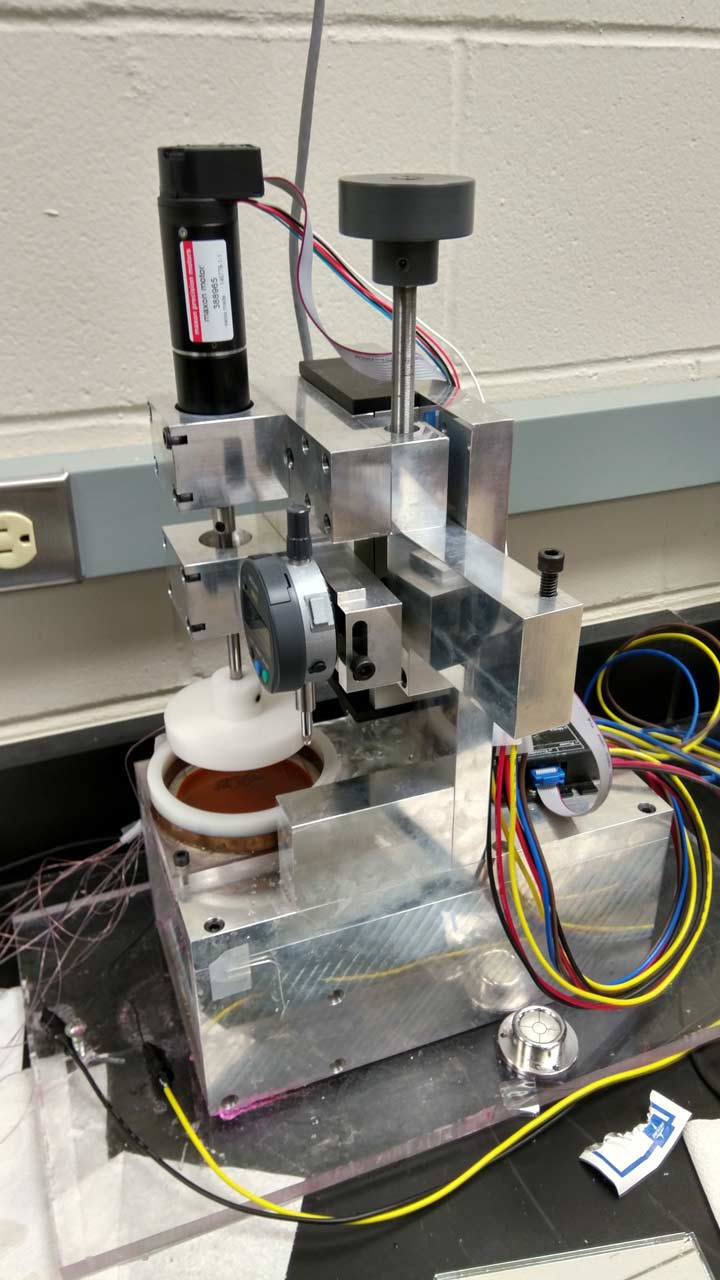Point of Contact: Phillip Ligrani, email: phillip.ligrani@uah.edu

Double wall cooling experimental facility with heated main flow, cross channel coolant flow, and impingement coolant flow components.

Photograph of experimental apparatus employed for heat transfer measurements and analysis of elastic turbulence phenomena within a Rotating Couette Flow configuration.
The Thermal Fluid Sciences Laboratory (TFSL) capabilities include investigation of impingement cooling with impingement jet Reynolds numbers up to 100,000, Mach numbers up to 0.8, and coolant to surface temperature ratios as low as 0.6. Of particular interest are effects of special surface roughness textures, and shaped impingement-hole configurations. Another facility is employed for double wall cooling investigations over a wide range of flow conditions, and has provision to include the simultaneous effects of impingement jet array cooling, cross-flow coolant supply, full coverage effusion cooling, and conjugate heat transfer phenomena. The effusion cooling is provided with a full-coverage array of holes. One unique aspect is a main flow mesh heating system, which allows for transient heat transfer measurements, which, when employed with infrared thermography, provides simultaneous spatially-resolved distributions of surface heat transfer coefficients and surface adiabatic temperature (from which, distributions of adiabatic film cooling effectiveness are determined) The diagram below shows the double wall cooling test facility, including photographs of individual components. The laboratory also has capabilities for investigations of micro-fluidic and millimeter-scale-fluidic phenomena, including micro-pump flows, and the effects of slip phenomena on gas and liquid flows in micro-scale passage flows with and without surface roughness, including the effects of hydrophobic surfaces and elastic turbulence. Recent elastic turbulence investigations involve measurements within Viscous Disk Pumps and Rotating Couette Flow environments, where the heat transfer apparatus associated with the latter environment is shown in image below. Also of interest is experimental and numerical investigation of unsteady impingement cooling within a blade leading edge passage, as well as unsteady structure and development of both laminar and turbulent impingement jets, including Kelvin-Helmholtz vortex development. Other recent studies consider determination of entropy production from the flow field around a turbine guide vane, and the numerical simulation of this flow field by means of Computational Fluid Dynamics (CFD). Also considered is impingement cooling of electronic chips, which are equipped with different cylindrical pedestal fin arrangements. More recently, confined, milliscale unsteady laminar impinging slot jets are investigated as they influence surface Nusselt numbers with constant surface heat flux and constant surface temperature thermal boundary conditions. Other investigations employ spiral inertial microfluidic devices for continuous blood cell separations, as well as microfluidic inertial, continuous SPLITT, and field-flow fractionation technologies for separations of whole blood components. More recently, secondary Dean vortices in spiral microchannels are investigated, and used to advantage for cell separations. Experimental techniques include a variety of devices for measurements of pressure, velocity, temperature, mass flow rates, and heat transfer characteristics, using a variety of devices, including millimeter-scale multiple-hole pressure probes, hot-wire anemometry sensors including subminiature sensors, liquid crystal thermography, and infrared thermography. Also available are a variety of flow visualization technologies and apparatus, including smoke wires, fog generators for gas flow visualizations, and dye injection in liquids.